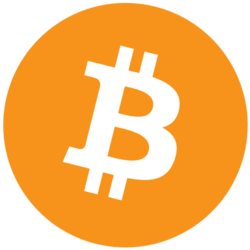The post What is The Ethereum Merge? by Aadharsh Pannirselvam appeared first on Benzinga. Visit Benzinga to get more great content like this.
Ethereum, along with Bitcoin, has built the foundation of most of the cryptocurrency space. As a mild consequence of this status, however, Ethereum has some slightly dated technological and tokenomic attributes that newer players like Solana and Cosmos have improved upon over time. As a result, Ethereum’s developers have been hard at work on a long-planned raft of hugely consequential changes to the Ethereum Network. Initially called Ethereum 2.0, these upgrades focused on scalability, security and sustainability and are now referred to as “The Ethereum Upgrades.” The most consequential of these upgrades is the process of merging Ethereum’s ongoing transactions to an upgraded test chain — the Beacon Chain — that has been running in parallel with the current main chain since December 2020.
Contents
Ethereum’s History
Ethereum was founded in 2015 by Vitalik Buterin, Joe Lubin and a few other developers following Buterin’s 2014 whitepaper, which envisioned a decentralized application platform and a system of smart contracts and protocols that greatly expanded on the utility that Bitcoin had demonstrated until then. In this sense, Ethereum’s whitepaper predicted many of the applications of blockchain that are used today in the context of decentralized finance (DeFi) and Web3.
One crucial event in Ethereum’s early history was the decentralized autonomous organization (DAO) hack, in which a group of network participants exploited smart contract vulnerabilities to gain majority control of the Ethereum Network — known as a 51% attack — stealing over $50 million worth of Ether, which had been set aside for a project known as the Yes.
The past 18 months have also been important in a similar sense, with the meteoric rise of DeFi and non-fungible tokens (NFTs), both in the crypto space and in the eyes of the general public. This attention has been important in terms of stress testing the Ethereum Network’s capacity to handle varied use cases and large fluctuations of traffic, and the concurrent emergence of Layer 2 solutions to cheaply (in a transaction cost sense) handle the scale demanded by these applications is a substantial motivator for Ethereum’s upgrades.
Ethereum Blockchain vs. Other Blockchains
Over the past seven years, some of Ethereum’s attributes have become issues, insofar as the quantity of transactions has ballooned massively, drastically increasing costs to use and operate the Ethereum Network for a variety of reasons. Among these reasons are bottlenecks coming from a network’s bandwidth or the total number transactions per second (TPS), the time it takes for transactions to process, the costs associated with making these transactions — both the magnitude and variance of the transaction fees, known as gas fees — and the environmental impact of the electrical consumption associated with each block in the network.
These aspects of Ethereum measure fairly poorly compared to newer blockchains like Terra and Solana, which boast much higher transaction throughputs and cheaper costs.
Why is Ethereum Upgrading to Proof of Stake?
Ethereum and Bitcoin both use a proof-of-work consensus mechanism, which uses more energy per block, translating to environmental impacts through the dirty grids that mine most of these tokens. Furthermore, through mining’s tendency to favor dedicated mining chips, tons of e-waste is also attributable to proof-of-work blockchains. Nano acts as a counterexample that proves that proof-of-work consensus doesn’t inherently mean that a chain uses lots of energy, and cleaner grids solve for most environmental concerns.
Proof of work as a consensus mechanism makes it relatively easier for a malicious party to take control of the network by controlling 51% of the network’s mining computational power, whereas proof of stake increases the number of validator nodes in the network to the point where a hacker would need billions of dollars in ETH in order to gain a comparable level of control. The attack would almost instantly devalue the ETH used to gain control, which is why such an attack is so unlikely to happen.
Sharding is another key reason for the transition to proof of stake, and refers to native side chains and Layer 2-esque solutions to reduce network congestion and thus drop node requirements and gas prices by a substantial amount. In this sense, most of the cost reductions slated for Ethereum’s upgrades are only going to take full effect in 2023, when sharding is enabled for Ethereum.
What Actually is Ethereum 2.0?
Ethereum 2.0 was originally the banner under which all Ethereum’s upgrades were housed, but the term has been recently phased out to avoid confusion — or the perception that Ether tokens are changing — with the current Ether tokens, which will be fully usable under Ethereum’s upgrades. The Ethereum Merge and the introduction of sharding collectively comprises the set of changes that was originally referred to as Ethereum 2.0
Where to buy Ethereum
To buy Ether, consumers need to exchange fiat currency to purchase cryptocurrencies, much like how one might purchase foreign currency before traveling to another country. These trades are most often facilitated by companies called centralized exchanges (CEXs), some of which include eToro, Gemini and Coinbase Global Inc. (NASDAQ: COIN). By virtue of its immense popularity, Ether can be bought and sold at any CEX and has exchange pairs with any cryptocurrency or fiat currency.
window.LOAD_MODULE_PRODUCTS_TABLE = true;
Gemini is a cryptocurrency exchange and custodian that offers investors access to over 100 coins and tokens. Founded in the US, Gemini is expanding globally, in particular into Europe and Asia. Offerings include both major cryptocurrency projects like Bitcoin and Ethereum, and smaller altcoins like Orchid and 0x.
Gemini is 1 of the only brokers with multiple platform options based on skill level. New investors will love the streamlined interface of Gemini’s mobile and web apps, while advanced investors might appreciate all the tools that come with ActiveTrader.
In addition to a host of platform choices, Gemini users also have access to insured hot wallets to store tokens without worrying about digital asset theft. Learn more about what Gemini can do for you in our review.
- New investors looking for a simple mobile and web app
- Day traders looking to use technical analysis tools
- Users looking for a 1-stop-shop to buy, sell and store all of their cryptos
- Easy and quick signups — can get started in as little as a 5 minutes
- Multitude of platforms to accommodate traders of all skill levels
- Hot wallets include insurance to protect your from theft and hacking attempts
- Charges both a commission and a convenience fee for users buying and selling through the desktop or mobile app
eToro, headquartered in Cyprus, England and Israel, has provided forex products and other CFD derivatives to retail clients since 2007. A major eToro plus is its social trading operations, including OpenBook, which allows new clients to copy trade the platform’s best performers. Its social trading features are top notch, but eToro loses points for its lack of tradable currency pairs and underwhelming research and customer service features
- U.S. based cryptocurrency traders
- Investors looking to CopyTrade other traders
- Simple user interface
- Several major cryptocurrencies and altcoins
- Expansive network of social trading features
- Large client base for new traders to imitate
- Only 29 coins available
How to Store Ethereum Safely
Individuals typically use tools called cryptocurrency wallets to securely store their Ether and assets. These wallets are associated with a unique Ethereum address which Ether transactions are sent to and from. Some examples of always connected hot wallets for the Ethereum network include MetaMask and Rainbow, both of which offer browser extensions for major browsers. More crypto-native browsers like Opera and Brave also offer native software wallets as well.
Cold wallets are hardware wallets that are connected to the internet only when they are powered on, essentially trading convenience for maximum security while still performing the same core function. Ledger makes thumb-drive-sized cold wallets that offer a high degree of compatibility and security.
The post What is The Ethereum Merge? by Aadharsh Pannirselvam appeared first on Benzinga. Visit Benzinga to get more great content like this.
- '
- "
- 0x
- 100
- 2020
- 51% attack
- 9
- About
- access
- accommodate
- addition
- address
- advanced
- All
- Altcoins
- among
- amount
- analysis
- Another
- Application
- applications
- apps
- asia
- asset
- Assets
- attributes
- autonomous
- banner
- beacon chain
- become
- BEST
- billions
- Bitcoin
- Block
- blockchain
- border
- brave
- brokers
- browser
- Buterin
- buy
- Buying
- Can Get
- Capacity
- cases
- chain
- cheaper
- Chips
- choices
- clients
- Coin
- Coins
- come
- coming
- commission
- Companies
- compared
- confusion
- connected
- Consensus
- Consumers
- consumption
- content
- contract
- contracts
- control
- convenience
- Core
- Cosmos
- Costs
- country
- crucial
- crypto
- cryptocurrencies
- cryptocurrency
- Cryptocurrency Exchange
- Currency
- Current
- customer
- Customer Service
- Cyprus
- DAO
- decentralized
- Decentralized Finance
- dedicated
- DeFi
- demonstrated
- Derivatives
- developers
- digital
- Digital Asset
- Doesn’t
- dollars
- Drop
- Early
- effect
- energy
- England
- environmental
- ETH
- Ether
- ethereum
- Ethereum 2.0
- ethereum network
- etoro
- Europe
- Event
- exchange
- expanding
- extensions
- Features
- Fees
- Fiat
- Fiat currency
- finance
- First
- focused
- following
- forex
- Foundation
- Founded
- full
- function
- GAS
- gas fees
- Gemini
- General
- Global
- Globally
- going
- great
- Group
- hack
- hacker
- hacking
- happen
- Hardware
- Hardware Wallets
- High
- higher
- history
- How
- HTTPS
- image
- Impact
- important
- Inc.
- include
- Including
- increasing
- insurance
- Interface
- Internet
- Investments
- Investors
- Israel
- issues
- IT
- Key
- known
- large
- lead
- LEARN
- Ledger
- Level
- LG
- LINK
- little
- LLC
- looking
- love
- major
- Majority
- MAKES
- Making
- Market
- measure
- medium
- MetaMask
- million
- Mining
- Mobile
- months
- more
- most
- multiple
- nano
- Nasdaq
- Navigation
- network
- NFTs
- nodes
- non-fungible
- non-fungible tokens
- number
- offer
- Offerings
- Offers
- Opera
- Operations
- Options
- order
- organization
- Other
- participants
- partner
- platform
- Platforms
- players
- Point
- possible
- power
- Principal
- process
- Product
- Products
- project
- projects
- proof
- Proof-of-Work
- protect
- protocols
- proves
- public
- purchase
- rating
- reasons
- reduce
- Requirements
- research
- retail
- review
- Risk
- round
- running
- Scalability
- Scale
- securely
- security
- sell
- sense
- service
- set
- sharding
- similar
- Simple
- smart
- smart contract
- Smart Contracts
- So
- Social
- Software
- Solana
- sold
- Solutions
- SOLVE
- some
- Space
- Sponsored
- stake
- started
- Status
- store
- streamlined
- stress
- substantial
- Sustainability
- system
- Technical
- Technical Analysis
- technological
- Terra
- test
- Testing
- theft
- Through
- time
- today
- Tokens
- tons
- tools
- top
- trade
- Traders
- trades
- Trading
- traffic
- transaction
- Transactions
- Traveling
- typically
- unique
- us
- USA
- use
- users
- utility
- variety
- vitalik
- vitalik buterin
- Vulnerabilities
- W3
- Wallets
- web
- Web3
- What
- What is
- while
- Whitepaper
- without
- Work
- worth
- would
- years














